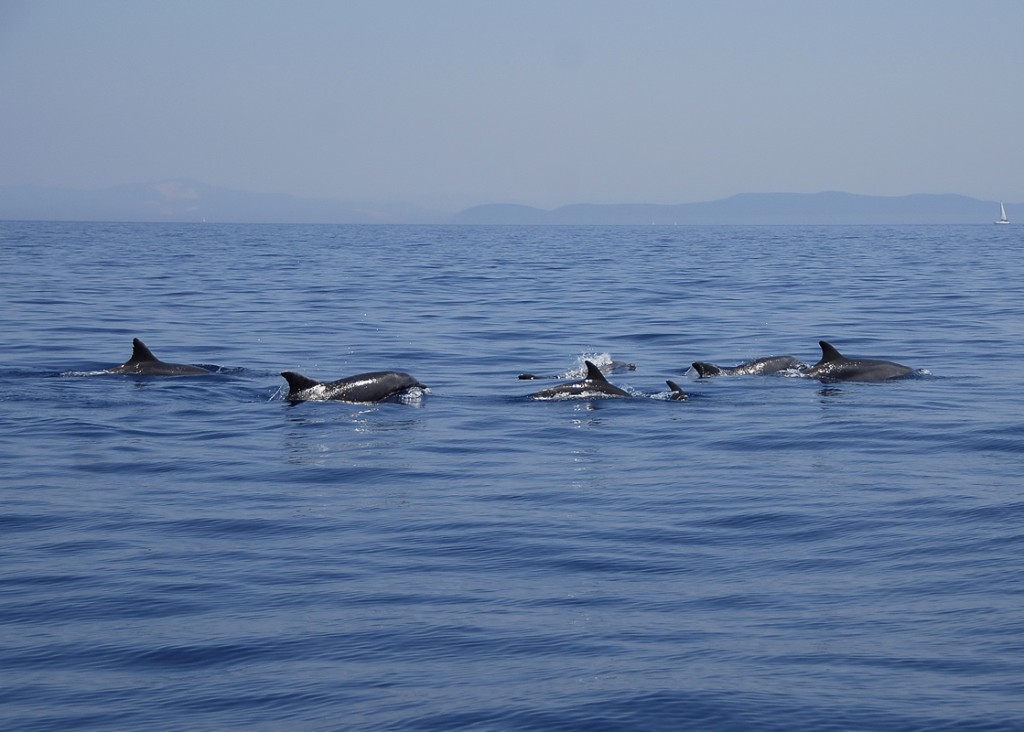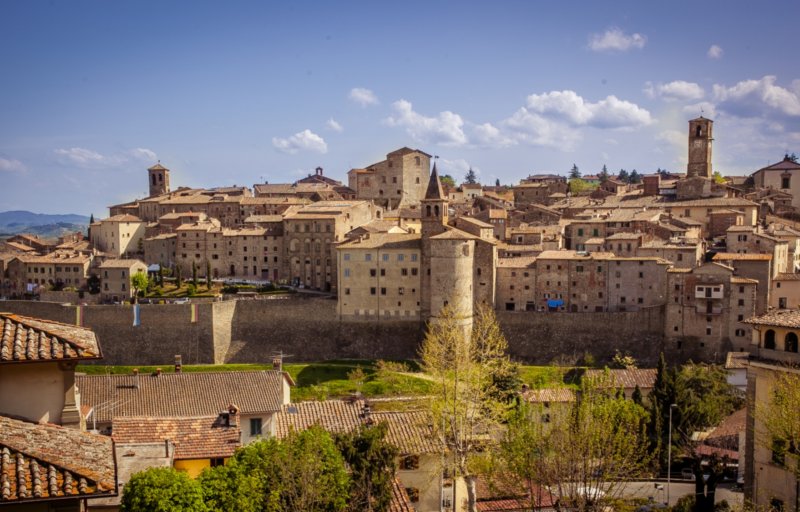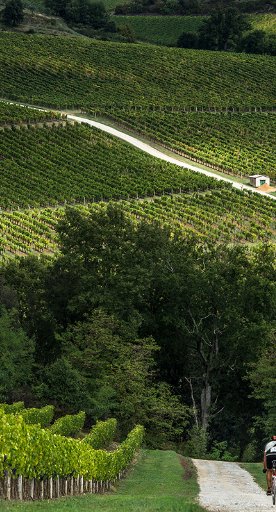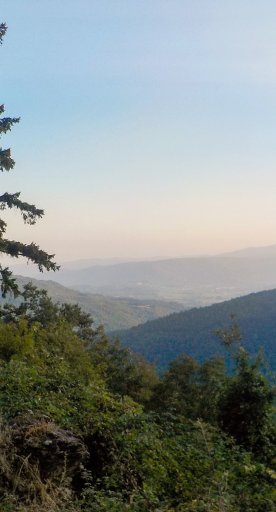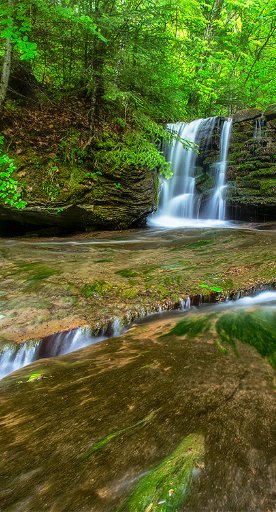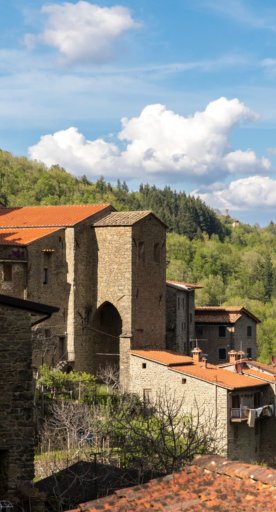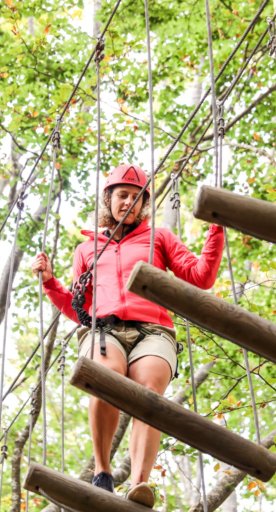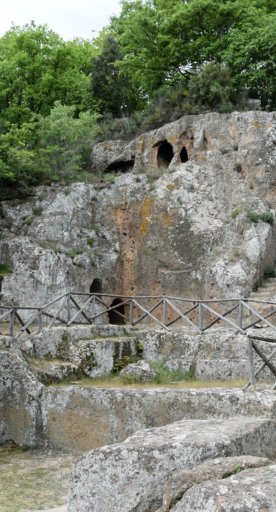

Trekking in the mountains: among hermitages and nature parks
Walking through the unspoilt nature
From the Apennines to Monte Amiata, you can venture into plenty of trekking circuits and experience a truly wild vacation among the nature parks, hermitages and ancient pilgrimage routes.
-
1.Lunigiana and Apuan Alps
-
2.Monte Amiata
-
3.Casentino
Lunigiana and Apuan Alps

We start with the Grand Italian Trail, a CAI trekking trail over 7000 km long, connecting all the regions of Italy.
A route created in 1983, by a group of journalists and hikers, across the Apennine ridge: Tuscany is also entirely crossed by this route, which enters the region through Lunigiana and the Passo dei Due Santi, in the municipality of Zeri.
On Monte Valoria, on the border between Pontremoli and Berceto, is the only point in Italy where it crosses the Via Francigena.
Again starting from Lunigiana, but crossing Garfagnana as far as Lucca, you can travel along the Via del Volto Santo, a devotional path about 150 km long, embraced by Christian spirituality, villages with thousands of years of history and the Apuan Alps in the background.
Lastly, one of the best-known hiking routes in the Apuan Alps: the Ring of Monte Forato. Starting from the pretty village of Fornovolasco, between woods and alpine ridges, the trail meets the Tana che Urla (Screaming Lair), a 400 m wide karst cavity that leads to a spectacular rock arch.
A day-long loop that requires a good level of fitness and proper equipment.
Monte Amiata

For those who are unable to decide between the sea and the mountains, this is a 136-kilometer route that allows you to enjoy both: from the lush mountain nature of Monte Amiata to the beautiful Maremma countryside, passing through the tuff city villages to the sea of Argentario. The Vetta Mare route crosses the vast Monte Amiata woodlands and through the unique Maremma landscapes.
Ideal for trekking lovers, it is also suitable for mountain bikes.
Also around this ancient volcano, the Monte Amiata Loop is a route just over 27 km long that winds through chestnut groves, fir woods and captivating beech forests. It can be undertaken in spring-summer, taking advantage of the cool, shady woods or in fall, when you can enjoy the spectacular fall foliage and the undergrowth rich in mushrooms and PGI Monte Amiata chestnuts. This itinerary - which can also be spread over two days - is ideal for hikers and bikers who want a 360-degree experience of the mountains and the surrounding areas.
Casentino

A land of unspoilt nature and deep spirituality, Casentino offers various options for those who love to walk.
The St Francis’ Way connects the numerous places linked to the life of St. Francis of Assisi in Tuscany.
From Florence, particularly from the Basilica of Santa Croce, you can get to the well-known Sanctuary of La Verna where Francis spent several periods of his life and where, in September 1224, he received the stigmata.
The itinerary then crosses the Valtiberina Toscana: from La Verna, two routes reach Anghiari, one route leads westward to Sasso di Simone and another rejoins the route leading to Assisi, passing through Monterchi.
The Apennine lands of the Casentino Forests, Mount Falterona and Campigna National Park, a historic protected area in the Tuscan-Romagna Apennines that preserves centuries-old forests and one of the largest forested areas in Italy, needs to be discovered calmly and patiently, following the gentle rhythms of the Apennines, in the shade of beech and chestnut forests.
The Sacred Forests Trail was created with precisely this intention: along a seven-stage trail that passes through the park's iconic places such as Mount Falterona, the Campigna Forest, the Acquacheta Valley and the hermitages of Camaldoli and La Verna, you can experience deep spirituality.
Before embarking on a hike, check the traversability status of the trails.
